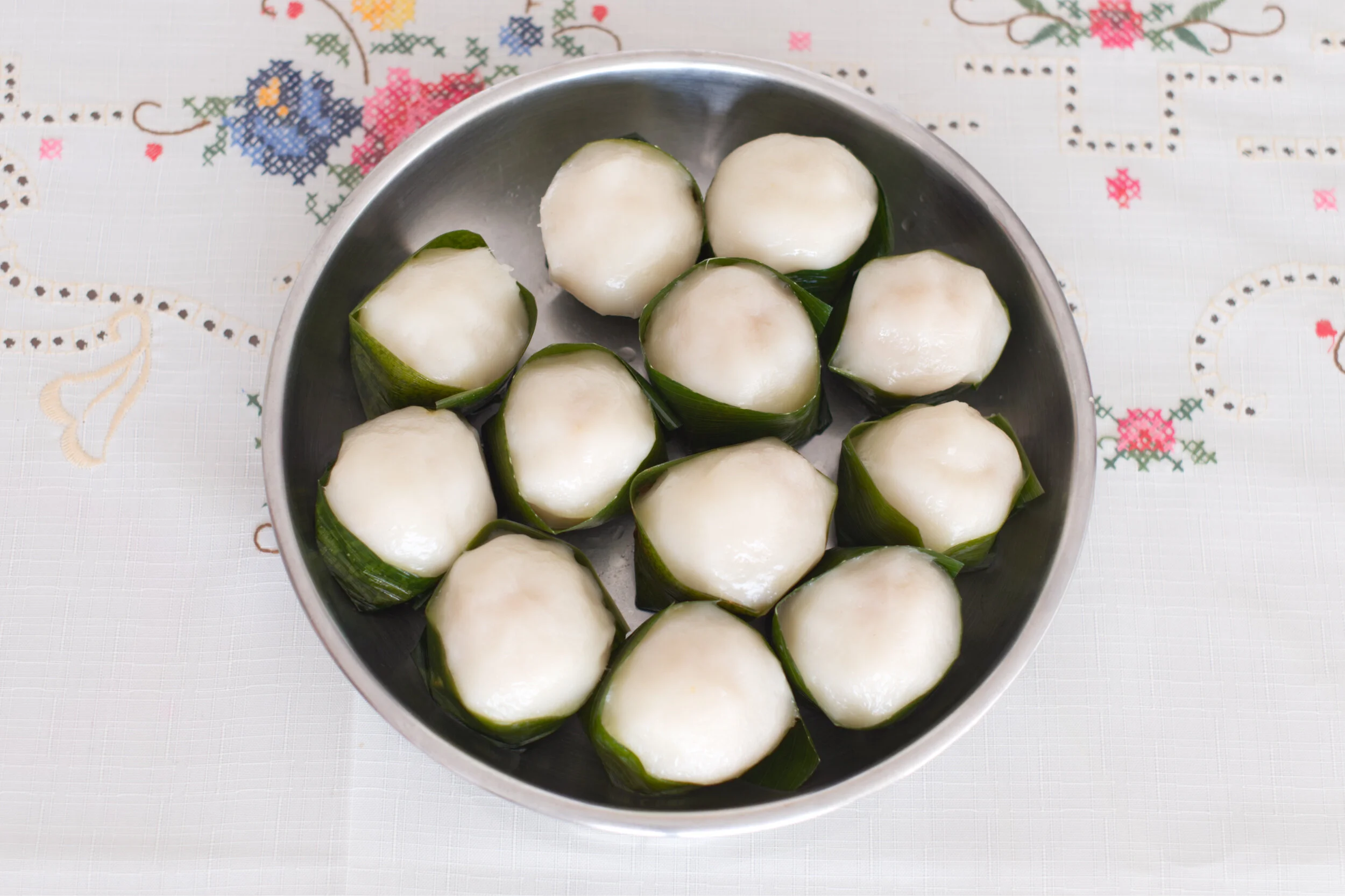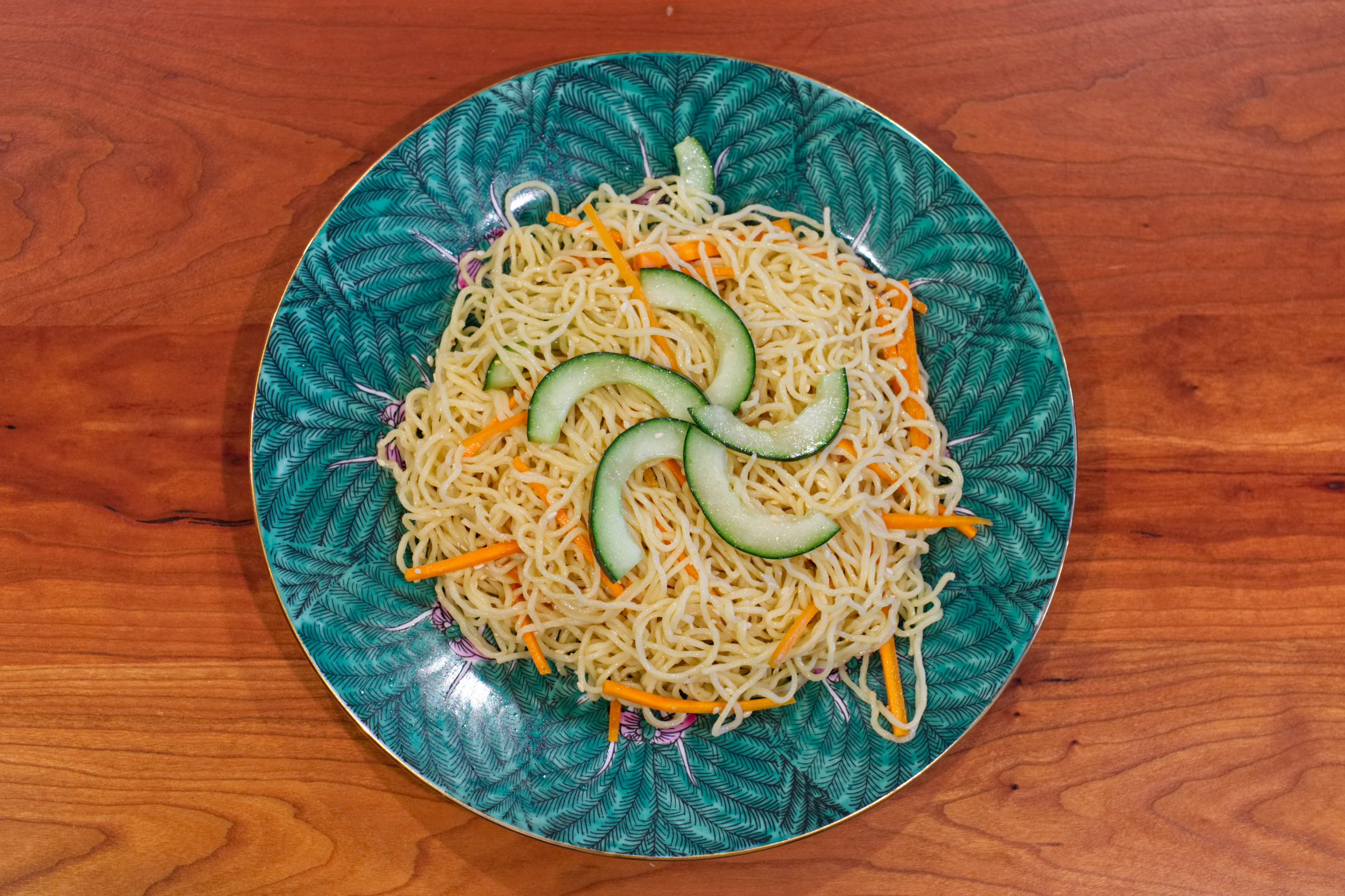茶果 Cha Gwo | 叶仔 Hip Zai

It’s already been one week seeing my folks back in Honolulu. On the morning that I left, I was able to record one more recipe. I don’t have much of a sweet tooth, but this is one of the few sweet dishes that I crave at times. I always knew of this dish as 茶果 cha gwo. They have different names depending on where you’re from. In Zhongshan where my parents came from, they’re called 茶果 cha gwo. They say in Hong Kong, it’s called 叶仔 hip zai and in Guangzhou it can be mixed depending on who you talk to. Both of these names don’t translate well into English so it makes a lot more sense just to learn it by one of the Chinese names.
It’s pretty much like 湯圓 tong jyun, those small dumplings in 糖水 tong seui, the dish of sweetened soup. They’re made in a very similar way, according to my mom the texture of the dough is exactly the same as 湯圓 tong jyun, but it’s bigger and they’re steamed instead of being poached.
This dish can be made both savory and sweet. If it was savory, my mom would use the same filling as Chaozhou Dumplings 粉果 fan gwo. But I asked her to make a sweet version which is filled with roasted peanuts and coconut. For the sweet version, there are other fillings so this isn’t the only combination for it.
It should be no surprise that my mom hardly gave me measurements, so what’s listed is what I roughly saw her put together. She basically said you can adjust all the ratios to your preference. If you like more coconut, add more or if you dislike it then just omit it. Toasted sesame seeds can also be added to the filling if you like.
The dish a traditional dish that’s very old, so both my parents have no idea why they are called 茶果 cha gwo. The other name 叶仔 hip zai is a little more obvious referencing the leaf that these kinds of dumplings are wrapped in. But there’s one other version of this called 三孖苦茶果 saam ma fu cha gwo. It’s made with a kind of medicinal herb 三孖苦 saa ma fu and while it’s known for its cleansing properties. The herb is incorporated into the dough, giving a dark green color. Since this herb is very bitter, they are only paired with sweet fillings to complement the flavor of bitterness.
RECIPE:
Banana leaves
1 cup toasted peanuts, crushed
Shredded coconut, about 1/4 cup
Sugar, about 6-7 metal spoons
16 oz bag of glutinous rice flour
Water
Oil
In a skillet or wok, toast the peanuts over medium heat tossing until they are aromatic and slightly golden. Set aside and cool. In a food processor, pulse until they are finely ground and place in a container.
Add the shredded coconut and sugar (adjust to taste) and mix with the crushed peanuts. This step can be done overnight before making this.
Bring water in a large pot to a boil and boil the banana leaves for about 2-3 minutes to clean them. Set them aside .
Boil some water and let this cool so it’s still hot, but not scalding. In a large bowl, add the glutinous rice flour. Add some hot water, about 1 cup, and combine with a rice paddy or chopsticks. This will help the dough become soft and pliable. If you only use cold water, then the dough is more prone to cracking as you knead it.
Slowly add cold water to the dough until it comes together. The dough should be fairly stiff so you can knead it and it will hold its shape and the dough.
Divide this into 20 pieces of dough and roll in the palms of your hand to form balls.
With your thumbs, form a disk about 1/3 inch thick. Fill each 茶果 cha gwo with some of the filling and seal. *Refer to video for technique.
Using scissors, cut the banana leaves so they are big enough to wrap each dumpling. Oil each leaf on one side. Place the banana leaf with the oil coated side facing up. Place a dumpling on the leaf, with about 3/4 inch of the leaf hanging beyond the dumpling. Roll the leaf around the dumpling and tuck in the bottom two to three times so the bottom is completely covered by the leaf and place each wrapped dumpling on a plate. *Refer to video for technique.
In a large pot or wok, bring water to a boil over high heat with a steaming rack. Place the plate of filled and wrapped 茶果 cha gwo. Steam for 15 minutes. Enjoy and share!
茶果 cha gwo after steaming
茶果 cha gwo with peanuts and coconut filling






